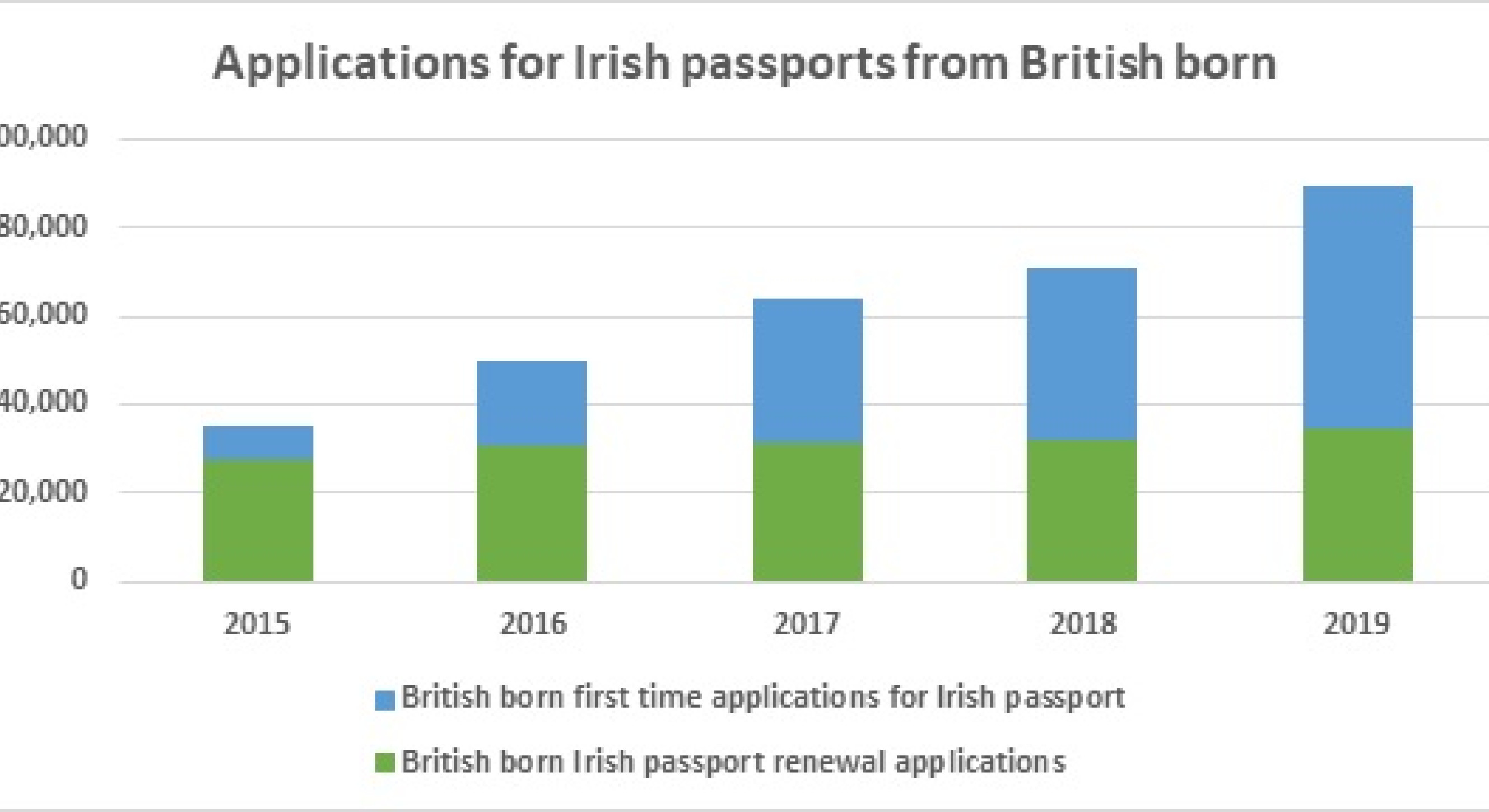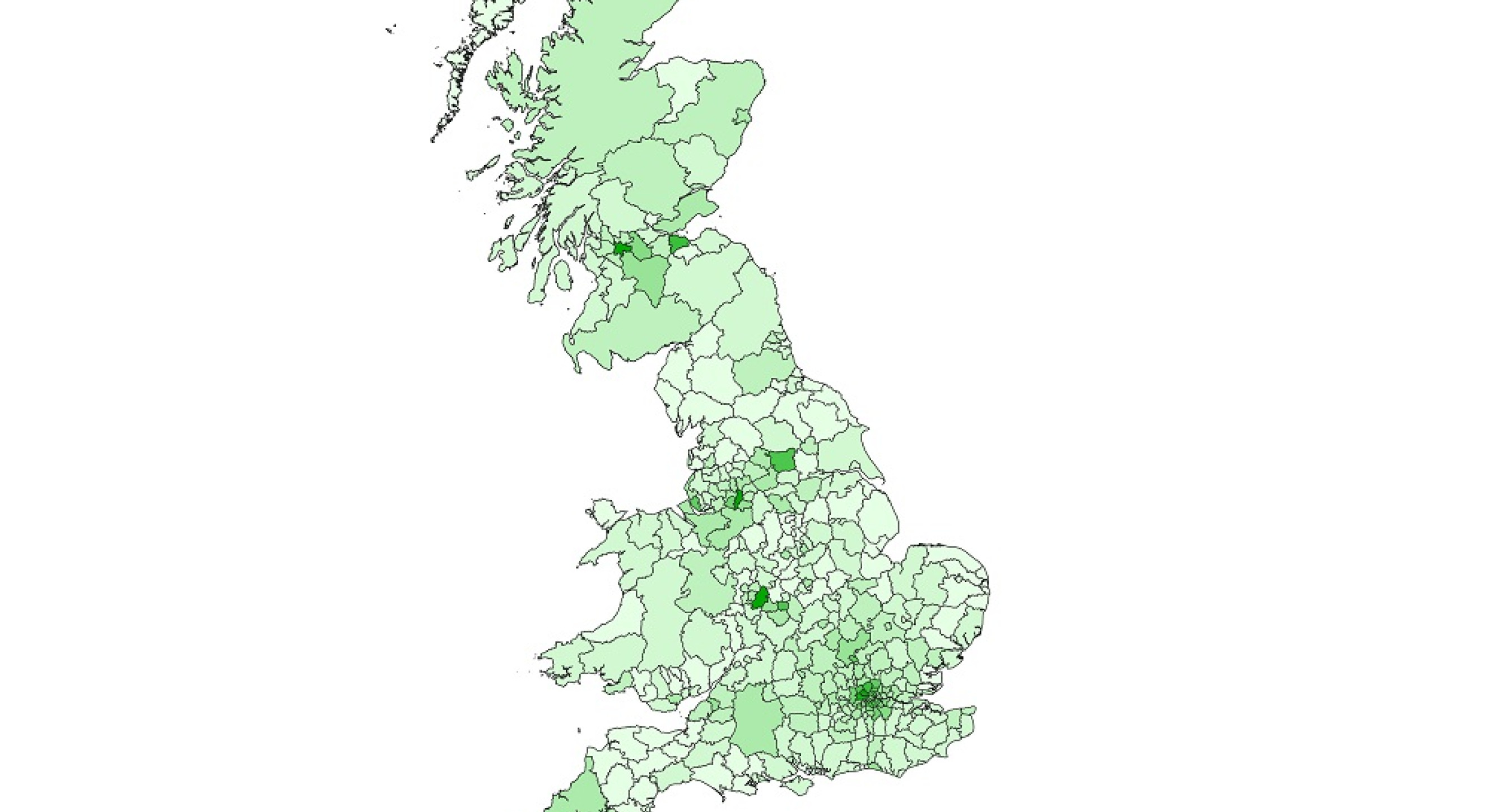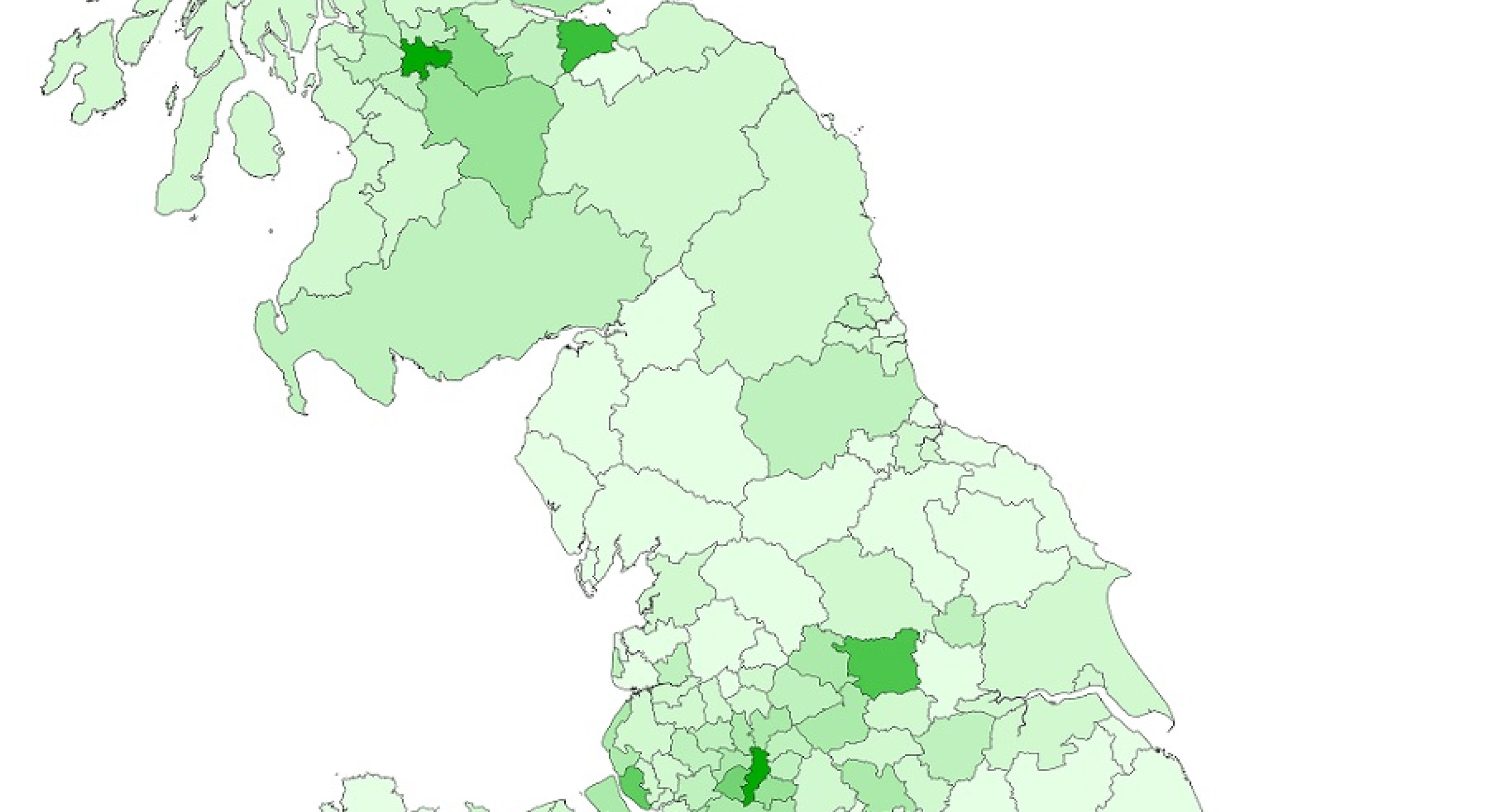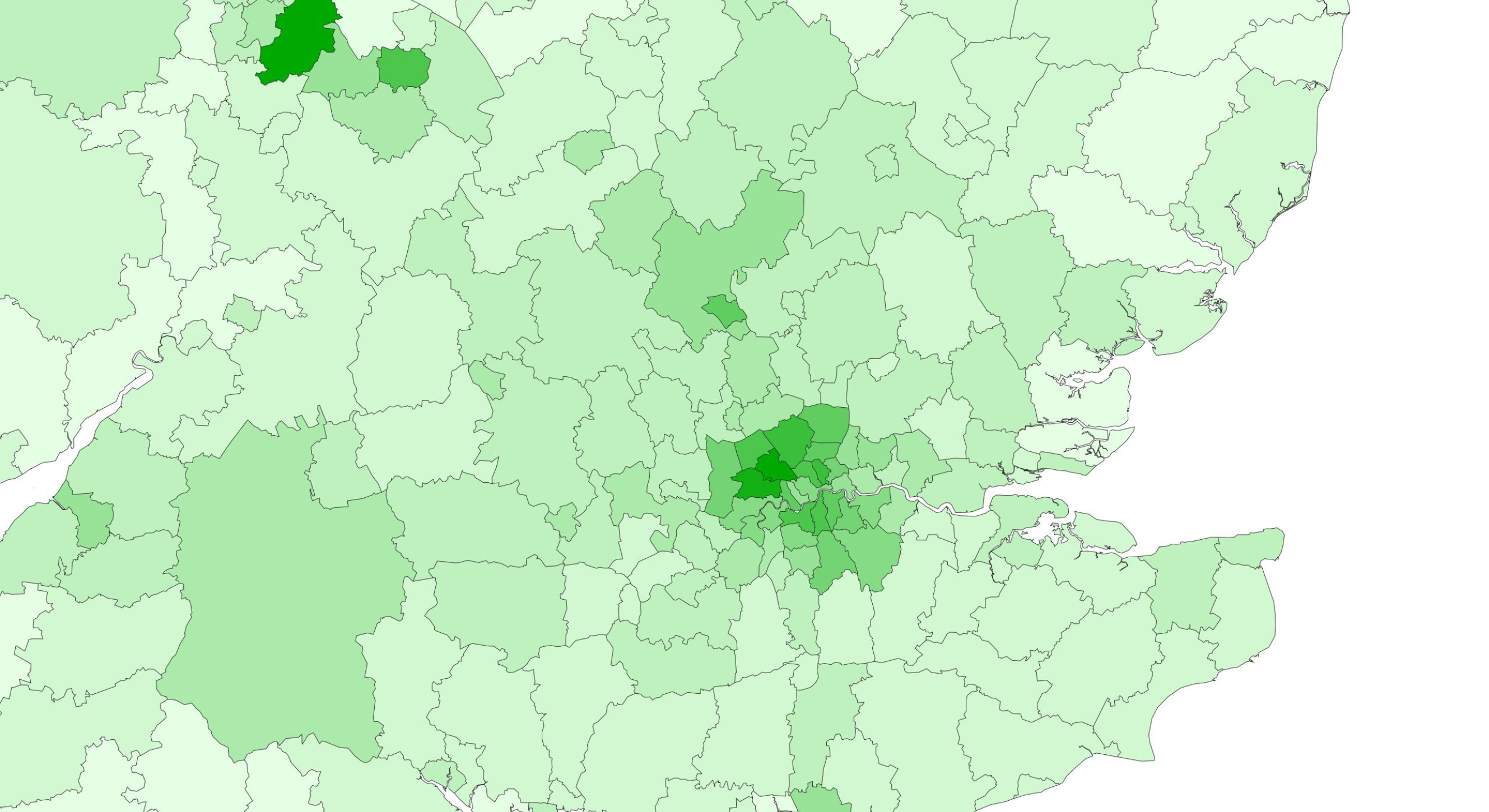We will probably never know exactly when St Patrick, a slave from Britain, arrived in Ireland, escaped and then later returned – though historians think it was during the fifth century. The conversion of Ireland to Christianity that he is so indelibly linked to sparked the first recorded arrivals of the Irish in Britain, primarily as missionaries: Columba to Scotland, Piran to Cornwall and Aidan of Lindisfarne.
The Irish have been coming to Britain ever since and in consistently large numbers from the 19th century, with significant numbers during and after the Great Famine and again after the Second World War. Irish construction workers rebuilt Britain and Irish nurses staffed the NHS.
Today the Irish continue to contribute and are visible within all strata of British life. Citizens of Ireland and the UK can move and work freely in both countries thanks to the Common Travel Area.
This article looks at where the Irish in Britain live, when they arrived in the country and the increase in Irish passports applications.
Where do the Irish live?
We highlighted the numbers born on the island of Ireland in our Mapping the Irish series ahead of the December 2019 General Election. This time we look at those who identified as White Irish in the 2011 census.
Identifying as White Irish was just one way of capturing Irishness in the census. Other ways to do so included selecting Irish as your national identity, noting that you have an Irish passport, or stating that you were born on the island of Ireland. Unfortunately, there is no option to include where your parents or grandparents (or even further back) hailed from, or which team you support during the Six Nations…
A total of 585,177 people ‘ticked the Irish box’ at the last census.
See Gallery (map of Britain; north of England and Scotland; and south of England)
The images demonstrate how widely spread the Irish community is in Britain. While there are concentrations in several towns and cities, there were only 14 local and unitary authorities with fewer than 500 identifying as White Irish.
The London boroughs feature heavily in any measurement of the Irish population and nearly a third of those identifying as White Irish were in the capital. As many as 175,900 Londoners identified as White Irish; Brent (12,300) and Ealing (10,400) had the highest figures. Brent is one of the most ethnically diverse areas in the country.
In Birmingham 22,000 identified as White Irish and in Manchester it was 11,800 (though the Greater Manchester area comes in at 34,400). In Scotland, Glasgow had 11,200 and Edinburgh 8,600. Other towns and cities in a deep shade of green are Coventry (7,300), Leeds (7,000), Liverpool (6,700) and Luton (6,100).
Being Irish or feeling an affinity with Ireland is ultimately a personal choice and any attempt to count people’s Irishness has its limitations. These maps give us just a taste of the richness of Irish culture in Britain. The White Irish category is an ethnic identity, rather than a cultural one, and does not account for those of dual and mixed heritage. The Irish Central Statistics Office has stated that 5 percent of the Irish population do not identity as White. Our member organisations include the Association of Mixed Race Irish and we support the #iamirish campaign.
When did the Irish come to Britain?
The post–war wave of arrivals still make up a huge proportion of the community today, though the next census in 2021 may show many new incomers over the last decade. This section uses census figures to show when Irish people moved to Britain.
There are no similar statistics for people from Northern Ireland moving to Britain as this is technically internal migration, but the last census did give us figures for those who moved from Ireland.

Well over half of those born in Ireland living in England and Wales in 2011 arrived before 1971. There is an increase in the years 2001–10 (plus the census year 2011) on 1991–2000, which may be influenced by the 2008 recession. It may also reflect how many Irish were studying or working in the UK at the time of the census but may have since moved back to Ireland.
In addition to these figures, the median age of the community in the census was 53. This is higher than all other major ethnic groups: White British (42), Black Caribbean (41), Indian (32) and Pakistani (26).
Much of Irish in Britain’s and our member organisations’ work addresses the distinctive needs of our community’s older profile. For instance, our Cuimhne campaign raises awareness and offers training to recognise memory loss in the community. Irish centres across the country run social events and welfare organisations offer outreach and other forms of support for the community.
The age profile of the community helps to account for the marked decrease in those identifying as White Irish in the 2011 census (585,177) when compared to the 2001 census (641,804).
Census 2021 – how many will have Irish passports?
Applications for Irish passports from British citizens has been one of the most recurrent stories of the Brexit narrative since the decision to leave the European Union in June 2016. Each year has seen applications continue to grow.
There were 409,113 Irish passport holders in England and Wales in the 2011 census. This data was not collected in the Scottish census. When the results of the next census (March 2021) are released, we expect this figure to have significantly increased to well over half a million.
Figures from the Department of Foreign Affairs and Trade show that total applicants from across the UK have more than doubled since the Brexit vote in 2016, as demonstrated in the chart below. The last four calendar years have seen 145,049 first time applications from people born in Britain.

A total of 54,859 British born people applied for an Irish passport for the first time in 2019; this was nearly a seven and half times increase on the 2015 figure of 7,372.
There were similar spectacularly high numbers from first time applicants born in Northern Ireland – 76,958 applied in 2019 in comparison to 24,492 in 2015.
There are millions of people in Britain with family ties and a close interest in Ireland and it is difficult to estimate how many more are eligible for an Irish passport. Howsoever the Irish community is defined, Irish in Britain is an inclusive and progressive network for all who come from, identify with or are interested in Ireland.
If you are interested in applying for a passport, you can consult our application advice page.
Next year’s St Patrick’s Day will be an especially important one for the community in the context of the 2021 census that March. Irish in Britain will continue to raise awareness about the ways in which you can make your Irishness known.
Further Reading:
www.irishinbritain.org/what-we-do/publications/census-analysis-reports
Rosalind Willis, ‘The fragility of “White Irish” as a minority ethnic identity in England’, Ethnic and Racial Studies, 40:10 (2017).



